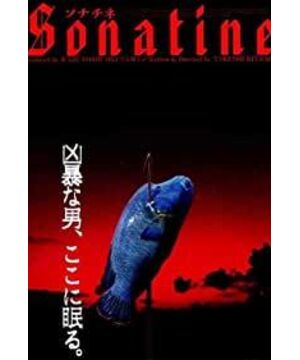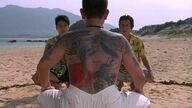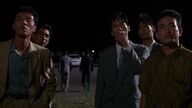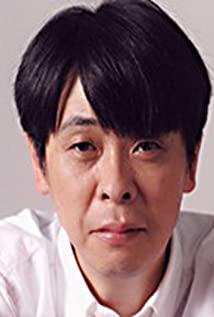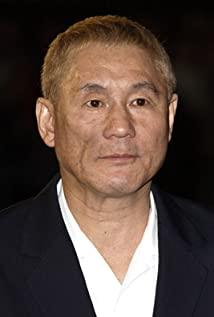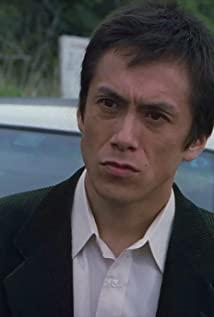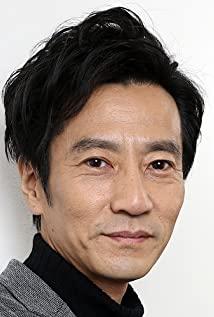Author | closer
amateur movie lovers
japanese gangster movies
From chivalrous benevolence to brutal reality
Black gang is one of the oldest film genres, with countless masterpieces such as "The Godfather" (1972) and "Goodfellas" (1990) born in more than 100 years. Apart from the popular Hong Kong black gangs, the only ones that can compare with the American black gangs are the Japanese black gangs.
The Black Gang in the East has a very deep historical foundation. Gangs in Hong Kong can be traced back to the Hongmen who "fighted the Qing Dynasty and restored the Ming Dynasty", and the Japanese black gangs originated from the down-and-out warriors during the Meiji Restoration. To this day, many Japanese gangs still call themselves the heirs of the martial arts spirit, with "loyalty" and "benevolence and righteousness" as the guidelines.
Traditional Japanese black gang movies describe chivalrous morality in this sense , and it exists more as a variant of martial arts. However, by the 1970s, such traditional black gang films about modern knights had all disappeared, replaced by films depicting the reality of the gangster, the gangster film really became a standalone type.
Battles Without Honor And Humanity (1973) was the initiator of this trend. The three words "without benevolence and righteousness" have explained the essence of the black society in its eyes, and it is called the "teaching parent" in the Japanese black gang. Although the Japanese black gang at the time of its strongest power could control the entire political situation, after the 1980s, the era of fighting and killing became a thing of the past, and it inevitably began to decline. This change is also reflected in the black gang during this period. help in the movie.
Juzo Itami's "Minbo no onna" (1992) is a typical example, and "Black Society" exists more as a subject rather than a genre. However, it was the comedian Takeshi Kitano who really made a major innovation in black gang films, created a new personal style, and gained international fame.
double life
Coldness and warmth coexist
"A boring life, I don't want to die!"
Kitano Takeshi's life was indeed hot. He came from a poor family, worked as a taxi driver, drove an elevator, spoke cross talk in a strip theater, and became popular in Japan as a comedian.
Kitano's first film appearance was in Daimyo's Merry Christmas Mr. Lawrence (1983), in collaboration with legendary director Nagisa Ôshima. In 1989, at the age of 42, he made his directorial debut "Violent Cop" (Violent Cop, 1989), which was the first shot of Japanese films in the Heisei era.
The Japanese films of the 1990s undoubtedly belonged to Takeshi Kitano, "3-4x10 Months" (1990), "A Scene at the Sea" (1991), "Sonatine" (1993) , "Kids Return" (Kids Return, 1996)... Each of his works can be selected for the "Cinematic Journal" annual top ten, and one "Flower Fire" (HANA-BI, 1997) won the The Venice Golden Lion Award made him a god in one fell swoop.
A strange habit of Takeshi Kitano is to use his stage name "Peter Take" when he is acting or on TV, and his real name "Take Kitano" when directing or writing. His own explanation is that he uses his stage name when he is funny or not serious, and uses his real name when he is serious. Regardless of whether this can be justified, it has to be said that the "double-sidedness" of extreme differences is comparable to Kitano Takeshi and his works.
Takeshi Kitano's films are known for two major elements. The first is ruthless violence . His aesthetics of violence is different from the fancy slow motion of John Woo and Quentin, but in silence, violence comes suddenly, breaking the original tranquility in an instant, catching people off guard (for example, in the scene of "Ferocious Man" , the creditor collects debts from the policeman played by Takeshi Kitano at an izakaya, who suddenly picks up his chopsticks and pokes the eyeballs of the creditor's attendant standing aside). Two is the ultimate warmth. Whether it is the setting of a journey with no return with his wife in "Hana", or the quiet romance under the blue sea in "That Summer, Tranquil Sea", Takeshi Kitano's tenderness is the tenderness of a loner. , with a hint of despair.
sonata
Brutal innocent smile
The most natural combination of these two extremely prominent but diametrically opposed elements is Kitano's third directorial work, Sonata. This work represents the true establishment of the so-called "Kitano Takeshi style".
The story of the movie is not complicated: the black gangster, Muragawa, played by Takeshi Kitano, is sent to Okinawa to help the brother gang fight another gang because of a disagreement with his boss. But the boss has secretly communicated with the other party to take the opportunity to end him. This dilemma forced him to make a desperate decision with his late-stage leukemia wife.
On the one hand, the Sonata follows the tradition of Japanese realist black gangs . The black society in this film is obviously a Japanese-style black society in the "post-"Battle of Benevolence and Righteousness" era--the mouth is full of brotherhood, but in fact it is full of conspiracy, and there is no morality. Muragawa, played by Takeshi Kitano, is the last member of the black society who really pays attention to benevolence and righteousness, but it also becomes a thorn in the eyes of others. He received an order from his boss. Although he knew it was a trap, he still took his own men to Okinawa in order to obey the order. After a fierce shootout, he took his hands down to a small hut by the sea to avoid the limelight.
On the other hand, such a plot setting can also allow Takeshi Kitano to inject a wealth of childlike interest into the black gang movie, allowing people to see the image of a group of young black gang members.
In the second half of "Sonata", there is a scene that is unique among the traditional black gangs: in the idyllic seaside cottage, they dangerously play sumo on the beach, bathe in the Playing fireworks at the beach, and even meeting a child... Takeshi Kitano showed his comedic nature. This group of killers who killed without blinking a moment ago are now like a group of children playing various games and enjoying the joy of life.
Here, we see a masculinity that is completely different from John Woo's films - no heroic portrayal, no life and death pledge, but full of smiley innocence .
death obsession
Contradictions on both sides of the scale
However, the true core of Sonata is Kitano's own "death obsession". Muragawa knew from the beginning that he was stepping into a trap set by his boss, and he knew what would happen to him. Because of this, he can enjoy life in a small seaside house without reservation and laugh unrestrainedly.
However, Murakawa's smile is full of melancholy - his smile is a smile that has been weathered and experienced all the hardships of life, and it contains despair, because he knows that this is the last time of life, as if he is waiting for a certain moment in his hand. come. When his brother was killed by the killer sent by the enemy, he knew that the moment of fate had come. He decided to take the risk and fight the enemy to the death. Facing his daughter who had fallen in love with him, he comforted that he would definitely come back. But when the real revenge came back, he shot himself in a place she couldn't see.
"This may be a unique Japanese temperament, like a pendulum swinging back and forth between gentleness and cruelty. In order to balance, the two sides must be equal, and gentleness is to balance the existence of cruelty." - "Take Kitano" Takeshi Kitano: Out of My Eyes"
Love, tenderness and cruelty, fascination with death. The greatness of "Sonata" (or Kitano Takeshi himself) is that it successfully expresses the core shield and core consciousness of Japanese culture since ancient times within the framework of black gangs. The black gang movie that kills and kills can't touch. After "Sonata", the two elements of warmth and cruelty never appeared in a relatively balanced attitude in a Takeshi Kitano film. "Kikujiro no natsu" (Kikujiro no natsu, 1999) favors the former, and "Hanafire" favors the latter.
After 2000's "Brother" (Brother, 2000), Kitano temporarily bid farewell to the black gang. It was not until he experienced his most formal and most obscure "self-reflection trilogy" ("Two-faced Takeshi Kitano", "Long Live the Director", "Achilles and Roger"), he finally returned to the familiar black society The theme of the film "Outrage" (Outrage, 2010) trilogy. But it is more like a distant echo of the "Battle of Injustice" in the new era. The world around here has no warmth at all, which is very different from "Sonata".
*This article was originally published on the cinewoo public account. repost is not allowed without consent.
View more about Sonatine reviews


